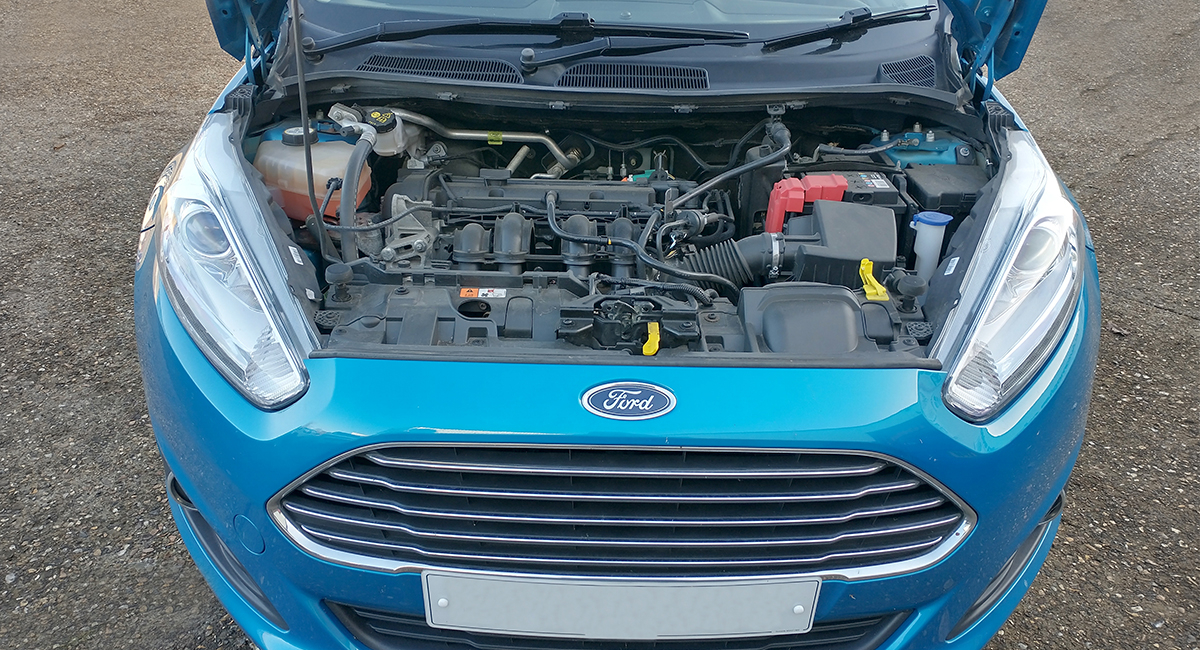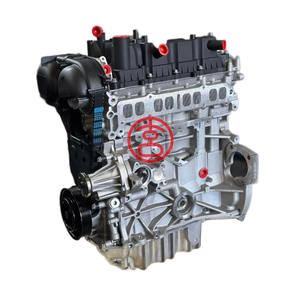Common Issues with the Ford Fiesta Engine and How to Fix Them
Common Issues with the Ford Fiesta Engine and How to Fix Them
Blog Article
The Future of Engines: Innovations Driving Sustainable Power Solutions
As the automobile market browses the necessary change towards sustainability, the future of engines is increasingly defined by groundbreaking technologies. Electric engine innovations, together with appealing advancements in hydrogen gas cells and biofuels, are reshaping the landscape of power solutions. The appearance of hybrid systems better complicates this development, offering both obstacles and opportunities to reduce exhausts efficiently. Paired with the combination of expert system in engine design, these technological strides increase essential questions regarding their lasting stability and influence on conventional standards. What might this suggest for the industry and consumers alike?
Electric Engine Developments
The evolution of electric engine developments represents an essential change in the aerospace and auto sectors, driven by the immediate requirement for sustainable options to fossil fuels. This transition is characterized by significant developments in battery technology, power electronics, and electrical motor style, which collectively improve the efficiency and efficiency of electrical engines.
Current advancements have actually resulted in the development of lighter, a lot more energy-dense batteries, such as lithium-silicon and solid-state batteries, which guarantee longer varieties and shorter charging times. Furthermore, enhancements in electrical motor efficiency, such as making use of long-term magnets and advanced cooling systems, enable electrical engines to run properly under differing problems. These improvements not just boost lorry efficiency yet also add to a decrease in general power usage.
In addition, the combination of innovative software application algorithms has actually optimized power administration in electrical automobiles, enabling regenerative stopping and predictive billing methods. As manufacturers significantly accept electrical propulsion, the auto and aerospace fields are seeing a standard shift towards greener modern technologies. This evolution not just fulfills regulative needs but likewise straightens with consumer preferences for eco friendly transportation remedies, solidifying electric engines as a keystone of future lasting movement.
Advancements in Biofuels
As the aerospace and auto industries progressively focus on lasting power sources, developments in biofuels become a complementary service to electrical engines. Biofuels, originated from natural materials such as crops, waste, and algae, provide an ingenious method for reducing greenhouse gas discharges and reliance on fossil gas.
Current study has focused on improving the effectiveness and sustainability of biofuel manufacturing. Second-generation biofuels utilize non-food feedstocks, reducing competition with food supply and decreasing ecological impact. In addition, advancements in synthetic biology have enabled the design of microorganisms to produce biofuels a lot more successfully, bring about greater returns and lower production expenses.
In addition, the advancement of drop-in biofuels enables seamless integration right into existing framework, making it possible for a smoother shift for markets typically based on nonrenewable fuel sources. ford fiesta engine. These gas can be utilized in current engines without modifications, promoting their fostering across numerous fields
Investments in biofuel innovation, together with supportive plans, are vital to drive development and scalability. As the global area looks for to fight environment modification, biofuels provide a practical, instant service that straightens with the overarching objective of sustainability in transportation and aeronautics.
Hydrogen Fuel Cell Modern Technology
An expanding number of researchers and companies are exploring hydrogen gas cell innovation as a practical option to standard power sources in transportation and power systems. This modern my website technology transforms chemical power from hydrogen into electricity via an electrochemical reaction, with water as the only result, making it an eco-friendly option.
The core of hydrogen gas cells is the fuel cell stack, where hydrogen particles are split right into protons and electrons. The circulation of electrons generates electrical energy, while protons relocate via a membrane layer to combine with oxygen from the air, developing water. This procedure results in high effectiveness and reduced emissions, placing hydrogen gas cells as an essential player in the shift to lasting power.
Considerable innovations have been made in enhancing the longevity and efficiency of fuel cells, along with reducing expenses with cutting-edge manufacturing methods. In addition, the development of hydrogen production techniques, such as electrolysis powered by renewable resource sources, enhances the sustainability of the general system. As framework for hydrogen refueling expands and production methods come to be extra efficient, hydrogen fuel cell innovation holds great guarantee for decarbonizing different fields, consisting of heavy-duty transport and stationary power generation.
Crossbreed Systems and Their Impact
Hybrid systems represent a significant advancement in lasting engine modern technology, combining conventional internal reference combustion engines with electrical propulsion to enhance energy effectiveness and decrease emissions (ford fiesta engine). This twin strategy permits automobiles to use both power resources, allowing higher flexibility in power intake and decreasing dependence on fossil gas

In addition to environmental benefits, crossbreed systems use consumers a sensible transition towards completely electric automobiles. They alleviate array anxiousness by incorporating the ease of gas with the benefits of electrical propulsion, making them an eye-catching alternative for a wider audience.
The Role of AI in Engine Layout
Leveraging sophisticated algorithms and artificial intelligence strategies, the auto industry is progressively integrating fabricated knowledge (AI) right into engine style Resources procedures. AI boosts the performance and performance of layout by analyzing large datasets to recognize optimal setups and performance criteria. This capability allows designers to imitate numerous operating problems and forecast engine actions under multiple scenarios, substantially decreasing the moment and cost connected with typical prototyping approaches.
Furthermore, AI assists in the growth of innovative materials and combustion procedures customized for sustainability. By optimizing fuel efficiency and lessening emissions, AI-driven designs line up with international efforts targeted at decreasing the carbon impact of automobile engines. Device knowing algorithms can also predict maintenance requirements, leading to improved reliability and durability of engine parts.
Furthermore, AI is critical in the integration of electrification modern technologies, such as hybrid systems, where it can enhance battery administration and energy healing procedures. As the market relocates towards even more lasting power solutions, the duty of AI in engine design comes to be significantly essential, driving advancement and boosting the efficiency of future engines. Eventually, the partnership in between AI and engine design declares a new period of smarter, cleaner, and more efficient auto innovations.

Verdict
In final thought, the future of engines is being shaped by a convergence of cutting-edge modern technologies that focus on sustainability. Electric engine developments, biofuel growths, hydrogen gas cells, and hybrid systems jointly add to a considerable decrease in discharges and ecological effect. In addition, the assimilation of expert system in engine layout boosts performance and performance. These transformative remedies emphasize a dedication to producing a cleaner, more sustainable automobile landscape, inevitably profiting both culture and the setting.
Electric engine improvements, together with encouraging growths in hydrogen gas cells and biofuels, are improving the landscape of power remedies. In addition, improvements in electric motor effectiveness, such as the usage of permanent magnets and progressed cooling down systems, enable electric engines to operate effectively under varying problems. By enhancing fuel effectiveness and decreasing discharges, AI-driven designs straighten with international campaigns intended at decreasing the carbon footprint of vehicle engines. As the sector moves towards even more sustainable power remedies, the function of AI in engine layout ends up being increasingly essential, driving advancement and enhancing the performance of future engines. Electric engine advancements, biofuel advancements, hydrogen gas cells, and hybrid systems jointly contribute to a substantial reduction in exhausts and environmental influence.
Report this page